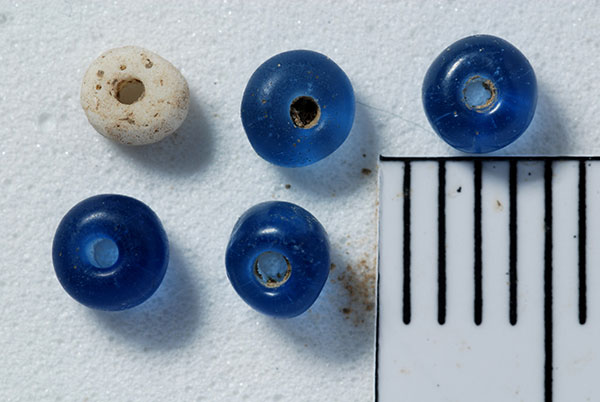Archaeological analyses showed that the Broome Tech site was a seasonally reoccupied camp with the main periods of use during the Transitional, Middle Woodland, and Late Woodland periods. Researchers established the site's chronology using soil stratigraphy, radiometric dates obtained on charred material recovered from features, and diagnostic material culture (projectile points, pottery, and steatite).
Soil Stratigraphy
Site stratigraphy was complex and showed five deep cultural (artifact-bearing) soil layers below the plow zone. These included a series of A horizons, which represent stable surfaces capable of supporting land use by people and animals. Using radiometric dating and diagnostic material culture, researchers determined that the most recent (the A2 horizon) dates to the Late Woodland period; the A3 horizon dates to the Middle Woodland period; and the A4 through A6 horizons date to the Transitional period.
Radiometric Dates
Archaeologists obtained 26 radiometric dates, mostly accelerator mass spectrometry (AMS) dating, a method that reduces the statistical margins of standard error. Ten dates are associated with the Transitional period of site use (A4 through A6 horizons, associated with steatite and pottery). While the Transitional period traditionally dates to 1500-1000 B.C., several Broome Tech dates have an averaged range of 775-542 B.C., which falls outside the Transitional period and into what is usually considered the Early Woodland period. A thermoluminesence date on pottery (which measures radiation given off by the pottery when heated) returned a date of 775 BC +241 years, also outside the traditional Transitional period. Except for a Meadowood point from an uncertain context, no other data suggest that people were at the site during the Early Woodland period (ca. 1000 B.C.-A.D. 0). Other dates from Broome Tech features associated with the A4-A6 horizons fell within the traditional Transitional period (1381-1111 B.C.).
Researchers submitted samples from six features associated with the A3 horizon for dating. Several, when averaged, have a date range of 41 B.C.-A.D. 65, which falls into the traditional Middle Woodland period.
The nine dates from the A2 horizon suggest an early Late Woodland occupation between A.D. 987 and 1390. This does not mean that the site was continuously occupied for four centuries, but that Broome Tech was an important place throughout the period, and was likely occupied and then abandoned for intervals during this time range.
Diagnostic Material Culture
Certain material culture types are also used to help document a site's chronology. Archaeologists recovered 133 projectile points dating to the Late Archaic (Lamoka, Dustin, Brewerton), Transitional (Orient Fishtail, Susquehanna Broad, Snook Kill), Early Woodland (Meadowood), Middle Woodland (Jack's Reef Corner-notched), and Late Woodland (Levanna, Madison) periods.
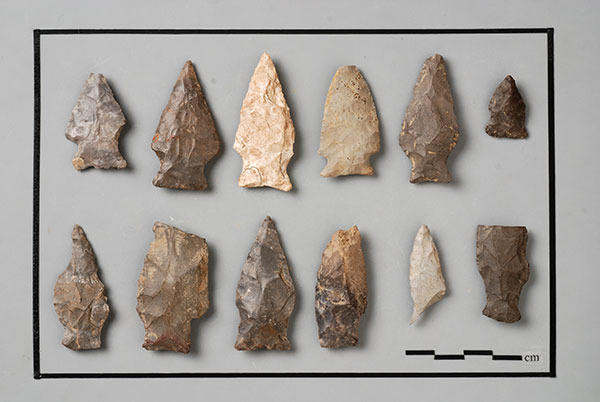
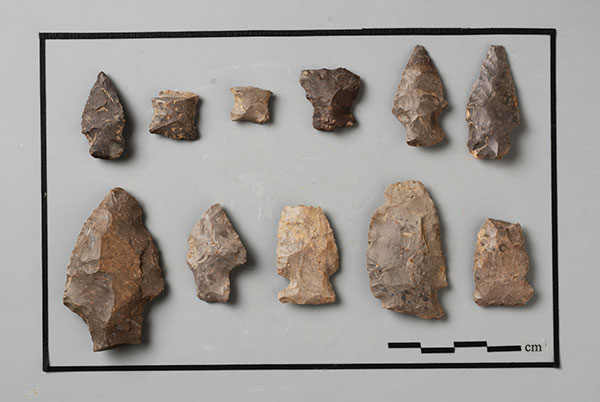
In addition to stone tools, archaeologists recovered pottery sherds from at least 251 vessels, most from the A2 or A3 horizons. These date to
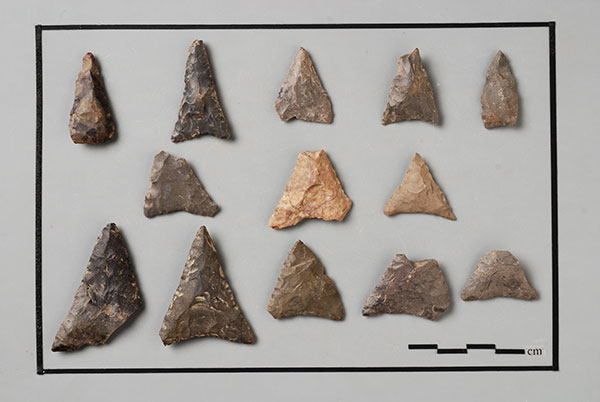
the Transitional (Marcy Creek, (Vinette I), Middle Woodland (Point Peninsula Corded, Jack's Reef Corded Collar, Jack's Reef Corded Punctate, Kipp Island Crisscross, Point Peninsula Rocker-Stamped, Vinette Complex Dentate/Point Peninsula Rocker Stamped), and Late Woodland periods (Point Peninsula Corded, Point Peninsula Plain, Kipp Island Crisscross, Wickham Corded Punctate, Carpenter Brook Cord-on-Cord, Levanna Cord-on-Cord, Levanna Corded Collar, Sackett Corded, Owasco Corded Horizontal, Owasco Herringbone, Owasco Platted, Owasco Corded Oblique, Kelso Corded, Oak Hill Corded).
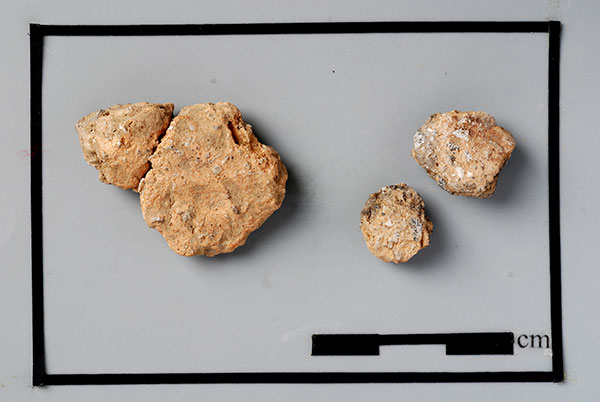
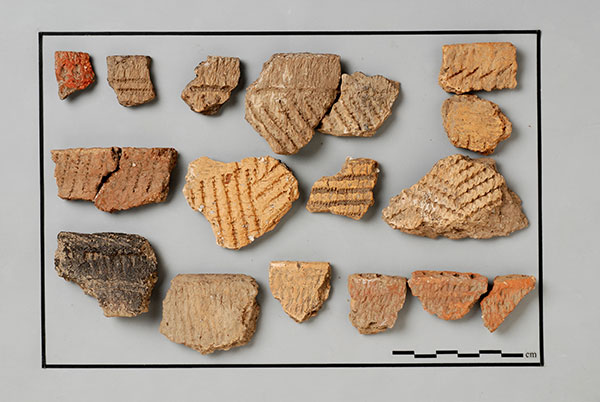
Archaeologists also identified 85 pieces of steatite from the Broome Tech site, most from the A5 and A6 horizons. Steatite (soapstone) is a soft and workable rock that was carved into bowls for cooking. The use of steatite in the Northeast has been traditionally associated with the Transitional period (1500-1000 B.C.). Steatite is not local to the Upper Susquehanna Valley. Analysis of steatite quarries and neutron activation analysis on steatite sherds can help determine where steatite found on sites was quarried. The sherds from the site indicate that the Broome Tech steatite originated from the Mid-Atlantic/Southeast region. Were these stone bowls traded brought to the site by traveling traders, or did people from our valleys go to the quarries to obtain them? The answers to this question are not known and may never be answered archaeologically.
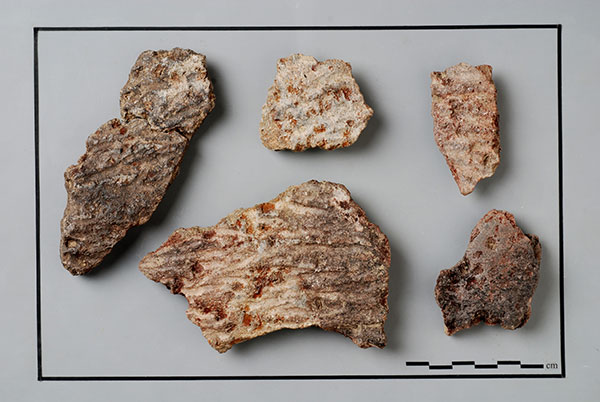
Five glass trade tube beads were also recovered. It is most likely, given Broome Tech's proximity to the string of Contact period villages known as Otsiningo, that they are historic Native American objects. Archaeologists did not identify a dated component associated with this historic Native American period.
